Experience the thrill of a treasure hunt in Raseborg – from the castle via a suspension bridge to the channel
Article by Johanna Suomela
What outdoor activity both young and old can do without having to be extra fit to do it? What can you do 24/7 and 365 days a year both in the city and in nature – for free? What activity has a goal, provides experiences and gets the lazy-bones moving? What is a hobby you can start with just a pen and a phone?
Some of your friends may already have tried it and gotten hooked, but you might not be familiar with it. You have probably heard its name, but the mystery surrounding it has kept you on your guard. But fret not, this microadventure and treasure hunt called geocaching is immensely popular all over the world!
So let’s go to Raseborg with our professional guide Stacy Siivonen! Stacy has been searching for treasures for 6 years now in 19 different countries. If you don’t know what geocaching is about, don’t worry – Stacy will explain it.
How to start geocaching?
Most important gear is an open mind. In addition to that, weather- and dirt proof outdoor clothing, good shoes, a smartphone and a pen. If you have a true GPS device, that’s OK, too, but a GPS-capable smartphone works fine as well. You might also want to take gloves and a flashlight with you, because some of the caches are hidden in quite imaginative places where you don’t necessarily want to blindly stick your hand into.
This game is played on www.geocaching.com. You can access the cache data when you register on the site. When that’s done, just download a geocaching app for your smartphone, activate the GPS function in your phone, and off you go to search for your first treasure!
If you are in an urban environment, you can do fine with just a regular map. However, when you step from the “concrete jungle” into the real one, a smartphone app is needed. The geocaching app will use up your data plan, so please make sure that you have a sufficient data plan with your mobile operator to avoid any unexpected charges. There are about 60 000 geocaches in Finland, so you will not run out of them very easily.
If you are going abroad for geocaching, please download the map of the target region for offline use while you are still home. Also, if you are planning to spend many hours anywhere looking for the caches, consider also taking a power bank with you.
Stacy has a pen and GPS device with her, so let’s get moving!
Stopping at the Snappertuna Church
We are heading towards the medieval castle of Raseborg, to perhaps the most spectacular castle ruins in Finland.
But on the way there we just have to stop at the Snappertuna Church which was built in 1689. The yellow church stands on a stately spot on top of a hill, calling us to come closer.
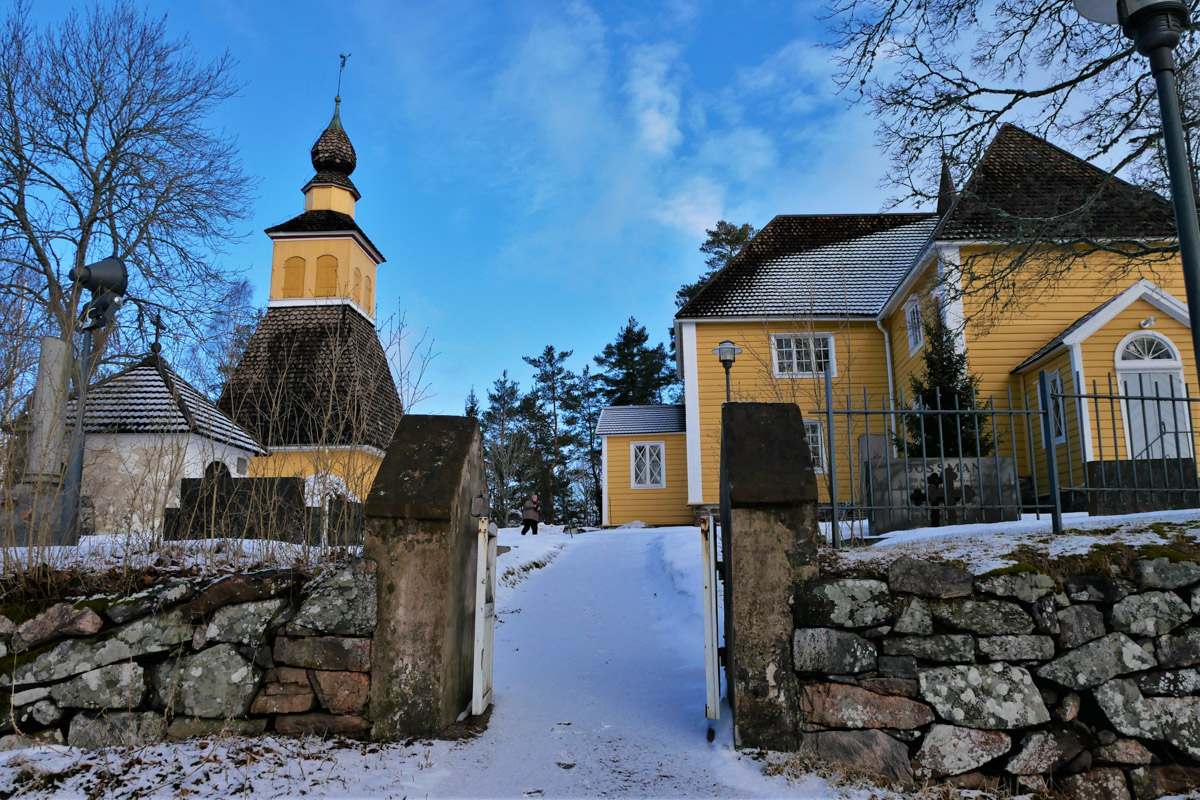
We admire the church from the outside and walk around it. To our disappointment, the church has no geocache, even if it could have. Many of the churches do.
During our short stop, Stacy finds two suitable places for a cache which are such that they wouldn’t cause so-called “geo-erosion”.
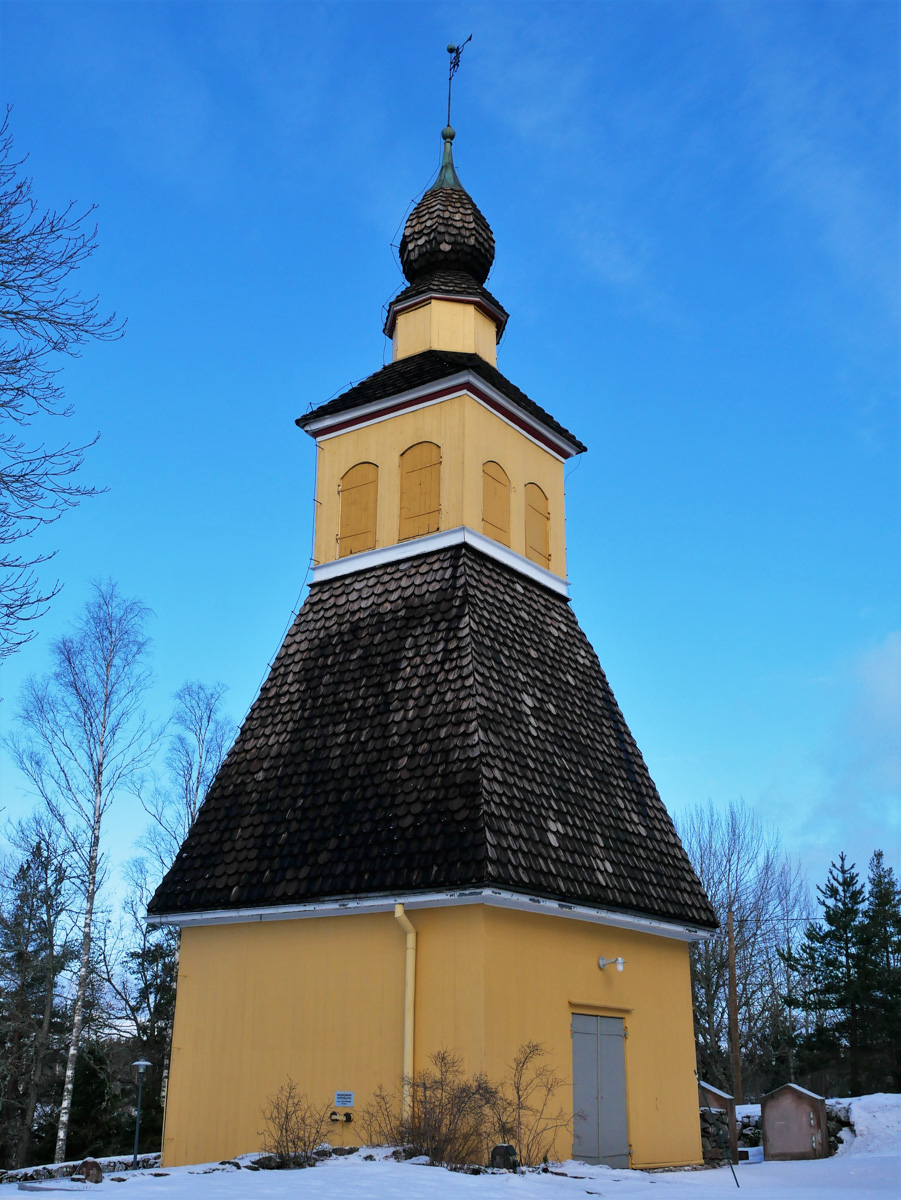
A responsible geocacher knows what the so-called “everyman’s rights” are. He/she also knows that where there are rights there are also responsibilities. One of the most important responsibilities with geocaching is that the caches are put in places where they don’t cause unreasonable wear and tear on the environment – that is, geo-erosion.
Another very important principle is to respect the rights of the landowner and people living near the cache sites. Caches must be placed so that they don’t disturb anyone. Obviously, laws must be obeyed, too.
The Raseborg Castle
Our geocaching trip proceeds to the ruins of the Raseborg Castle. However, calling them “ruins” doesn’t really do them justice. This place is a lot more than a pile of rocks and dilapidated walls.
Although it is not known for certain, what the castle has looked like in its glory days, the castle facade has been restored to show what it could have been.
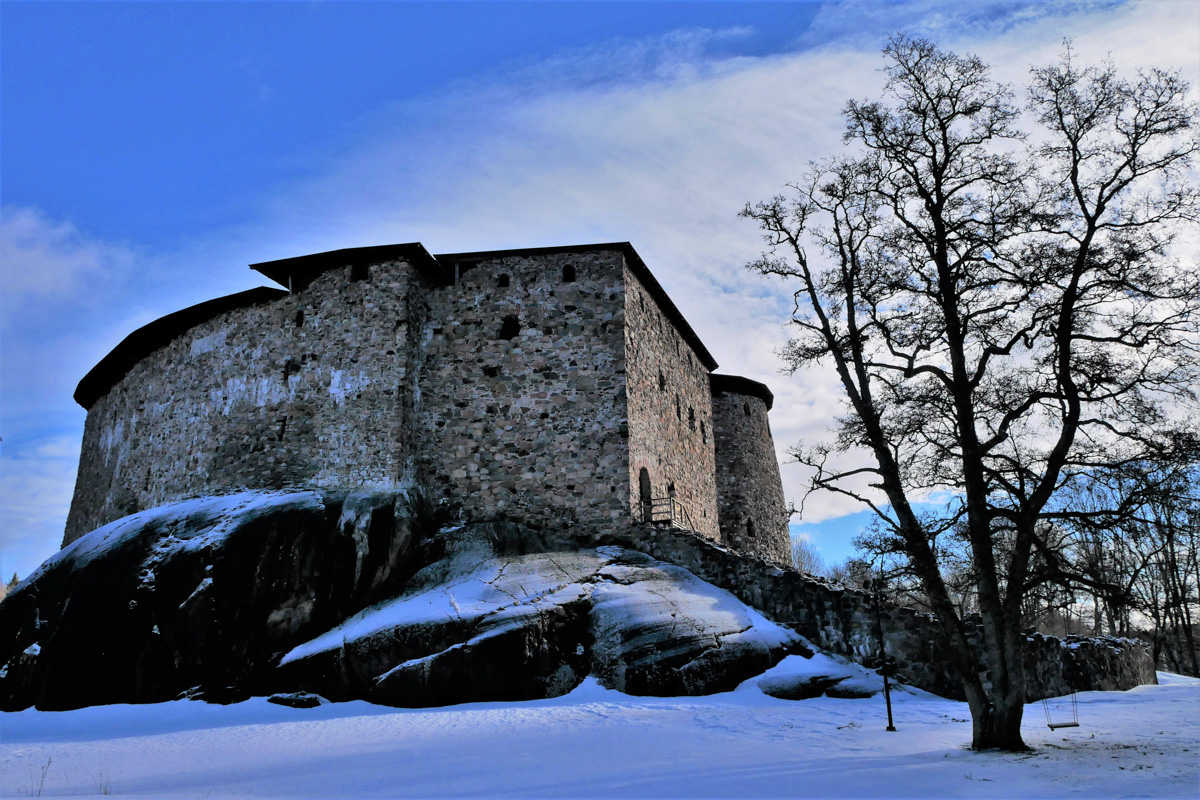
It is early spring, and the morning sun is shyly reaching with its rays towards the castle. Surrounded by a sea ages ago, the smooth glaciated rock is now a foundation for the castle.
In its time, the castle served as a centre of government of the West Nyland and as a military base. The castle has also overseen trade and seafarers on the Gulf of Finland.
In the 1450s and 1460s, life here was thriving. When the City of Helsinki was founded in 1550, Raseborg started to lose its stature. And when the beer cellar collapsed, things started to look really bad. The castle was abandoned in 1558, and it was left to rot in peace for over three centuries. Not until the 1880s, the value of the castle was realized again, and the restoration efforts began.
We pass an old swing hanging on the branch of a tree. Very insta-credible.
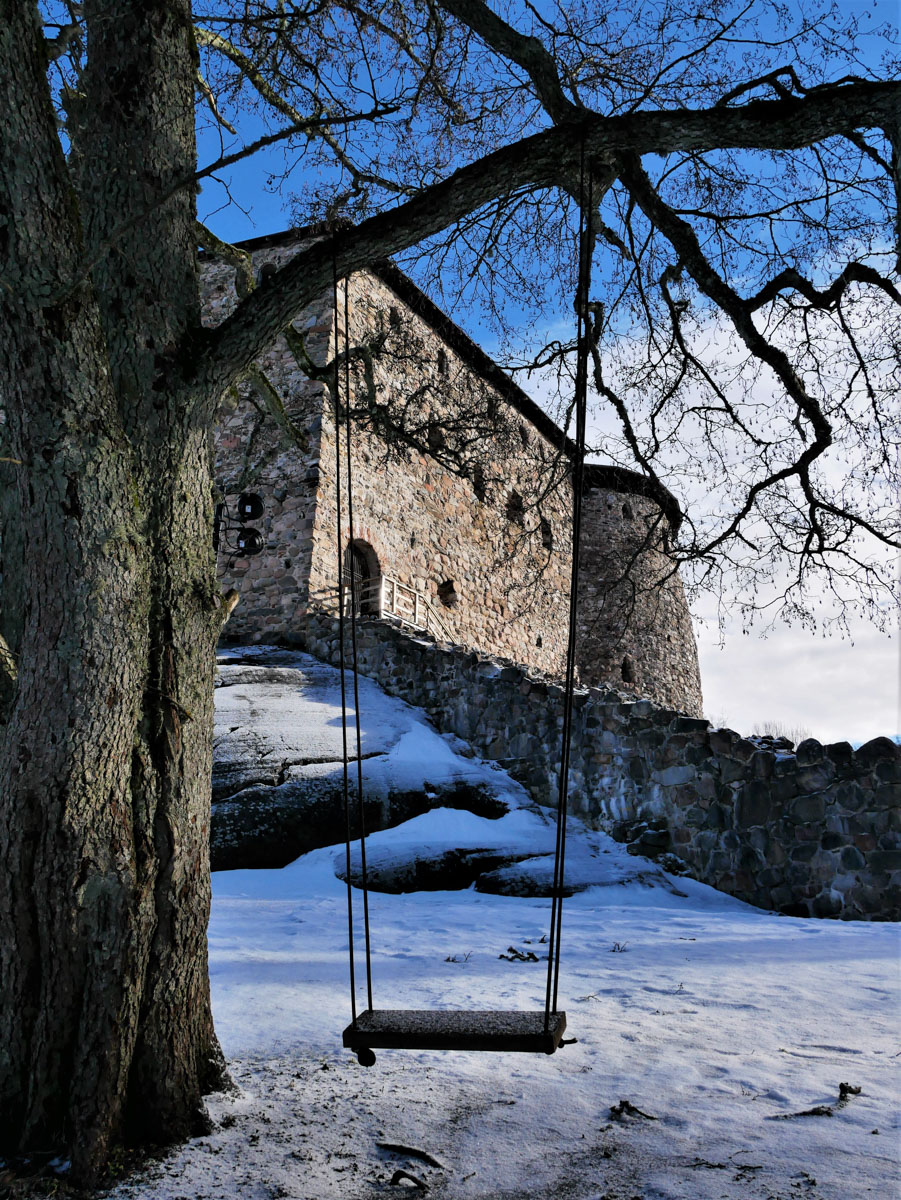
Frozen slush crackles under our feet as we tread on.
A flock of jackdaws takes wing from the castle battlements.
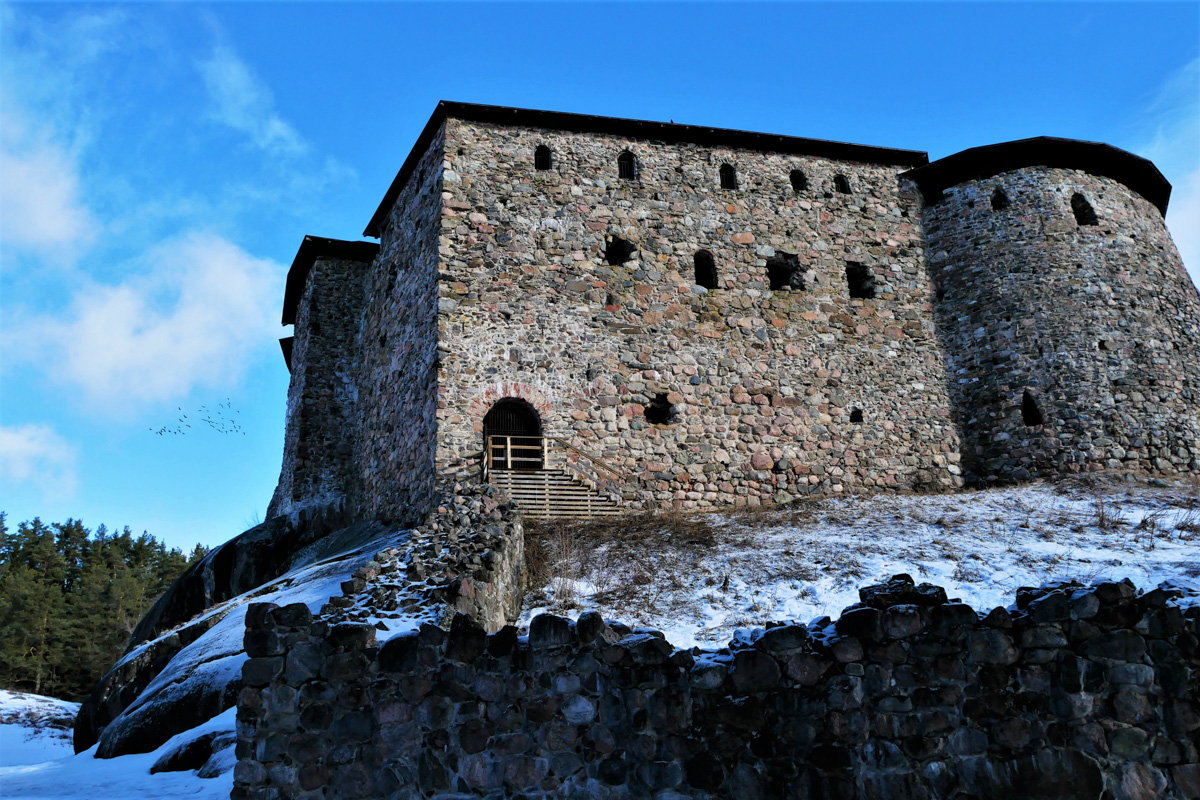
They won’t fly very far for our sake but circle back to where they started from.
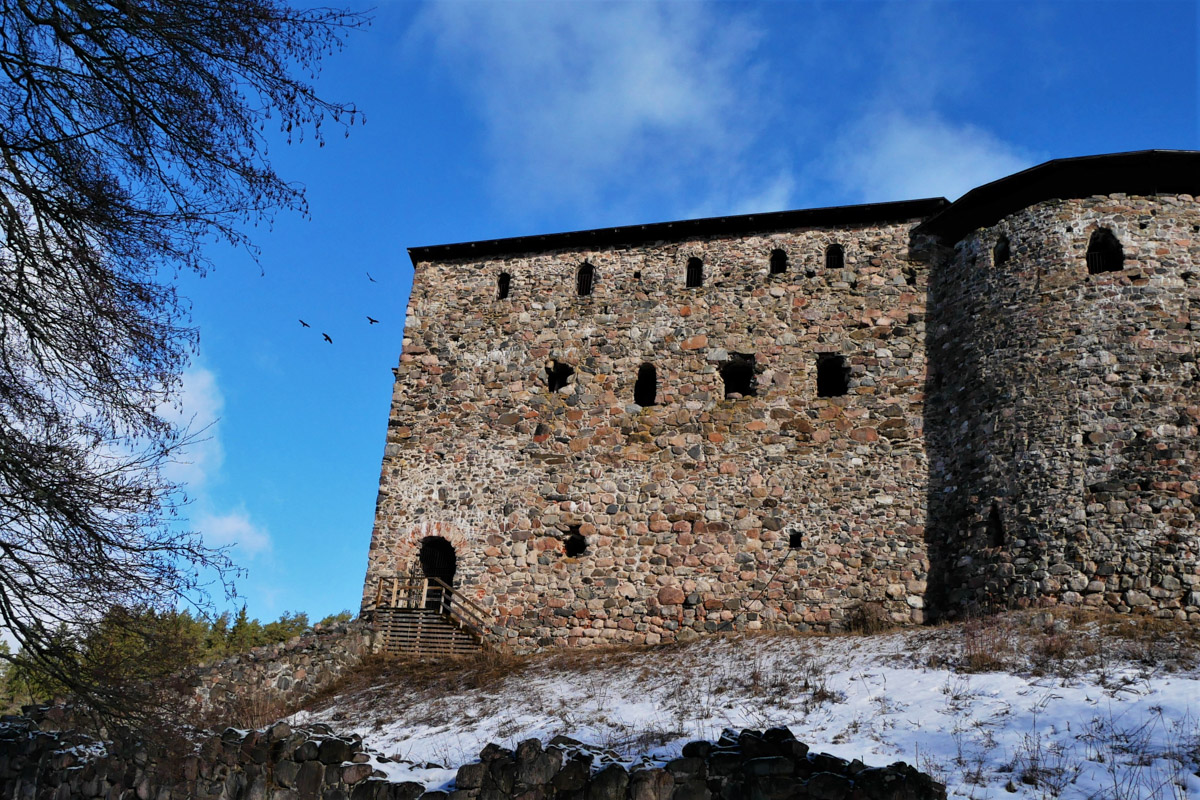
We notice that a fluffy friend with long ears has been by the castle hopping here and there.
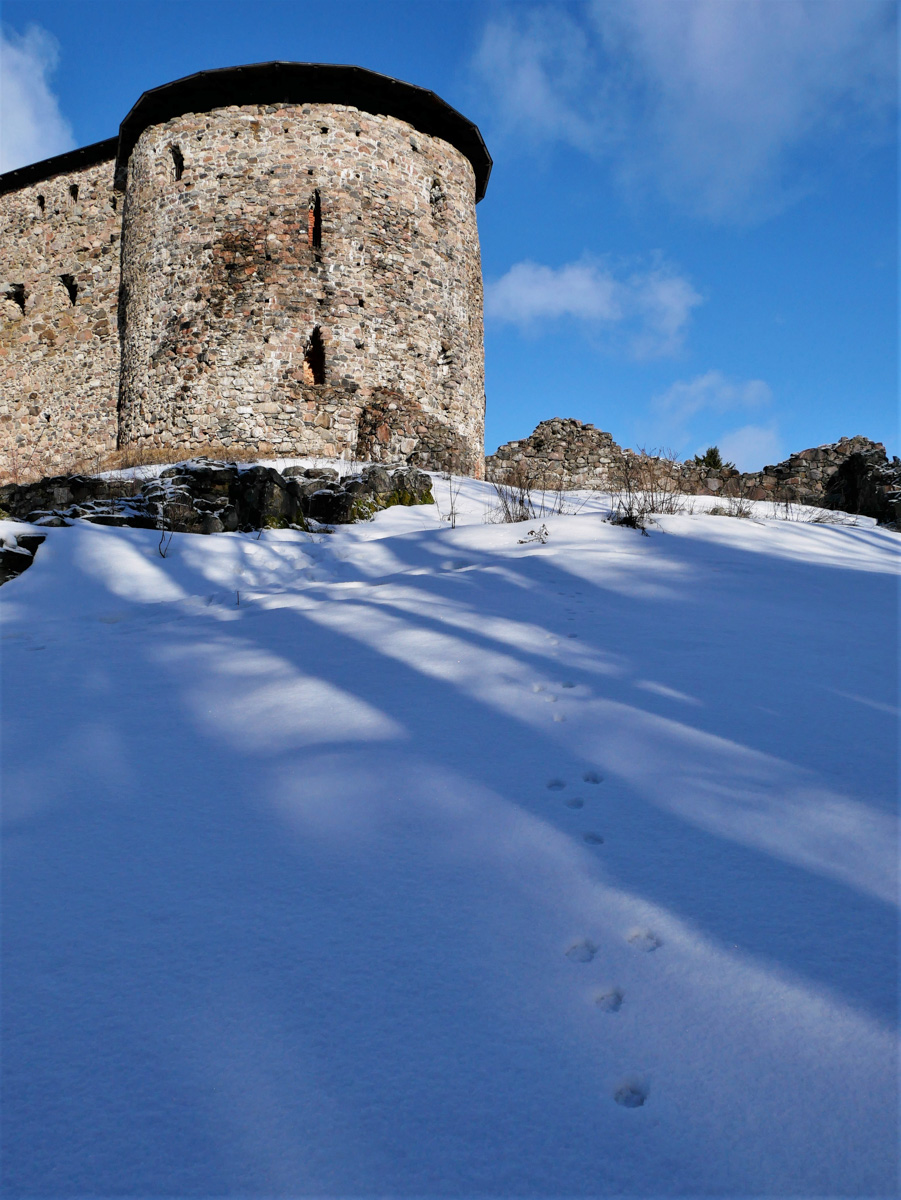
In the summertime, the Raseborg Castle hosts many different events like the Midsummer Festival, Medieval Fair, different concerts and Swedish theatre performances. The castle is administered by the Parks and Wildlife Finland (Metsähallitus), but it is for rent for those who wish to throw their own party in these historical surroundings!
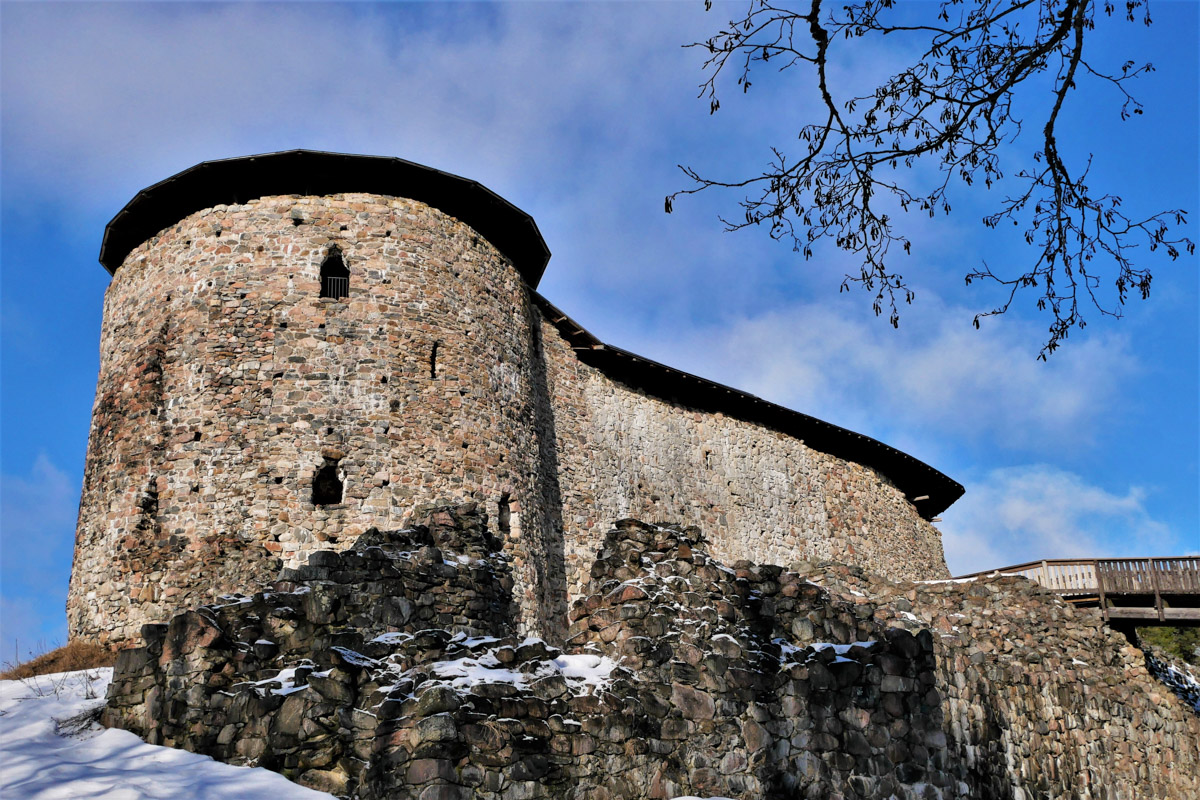
We don’t see any other people yet, but we do see nature, which is present in the spring, too.
We like this peace and quiet. It is good that the muggles aren’t around to see where the caches are. You cannot reveal the location of the caches to outsiders, because if you do, the caches might get lost – get muggled.
The types of geocaches
We know that this particular cache can be found also in the winter, and that it’s not located inside the castle. Facts about the history of this place can be found in the preliminary information about the cache, as in many other caches in historical places.
Every geocache has its attributes that determine what type of cache it is. Those attributes are saved in the geocaching site an in the geocaching app. The attributes may contain information about things that are allowed on the site – for instance if dogs are welcome or if you can make a fire. The attributes can tell you also the means of transportation with which the cache can be reached – like by bicycle, horse or snowmobile.
The attribute will also define the conditions related to the location of the cache; for instance if it can be found in the winter also, is any swimming required, if you have to climb, perhaps be aware of the cows – or to behave discreetly. Some caches might even require teamwork or a 10 km hike.
The cache attribute can also contain information about any equipment needed to find it, such as parking fee, boat, flashlight or an UV light – or snowshoes. Some caches can be high up in the tree and require some serious climbing. If there are evident dangers such as poisonous plants, dangerous animals, ticks, abandoned mines, crags or rock slides involved, the information about them is provided.
Nothing human and natural will be strange for the geocacher. Like in life, in geocaching also everything is possible. Some caches can really be in dangerous places, so you will certainly need to have common sense and patience. And this is why geocaching is a modern type of adventure.
The size of the caches varies from tiny ones about the size of a fingernail to huge. The biggest caches could be the size of a small house. That said, the most common size for a cache is a watertight box that can hold a pen and a log book.
Difficulty of the caches and their location as regards to the terrain is rated from 1 to 5 stars. The cache of Raseborg Castle has a rating of 1.5 stars for both. It has received 69 so-called FP (Favourite Points) from advanced cachers, which means that 69 users have considered the cache to be good and worth hunting.
And it will continue to be so after our visit as well – a veritable treasure trove. Stacy drops a heavy bundle of so-called “travel bugs” into the box. The travel bugs – as the name suggests – travel with the geocachers from one cache to the next. The travel bugs are marked with an individual tag which allows them to be tracked on the geocaching website. One travel bug wants to move around ice-hockey rinks, another wants to travel to Lapland and back.
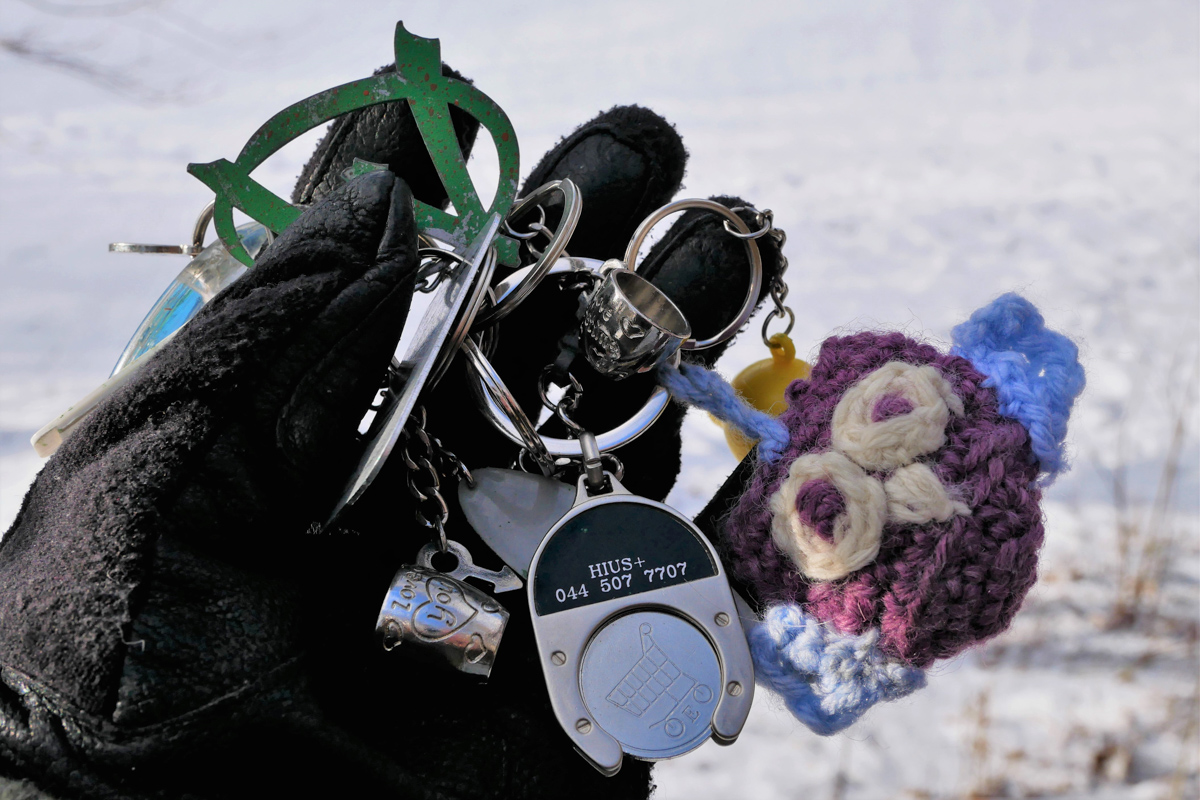
A pen is mightier than the sword: if you don’t sign the cache, it doesn’t count
The most important thing in geocaching is that you remember to sign the log book when you find the cache. Unless you don’t sign it with a handle you have registered at the geocaching website, you cannot tag the cache as found. Here, the rules of geocaching are ruthless. Stacy will sign the Raseborg log book with her own cacher handle.
I am admiring the majestic castle. No longer the sound of swords echo from these walls. It is so silent that you can hear the water drop from the castle roof gutters when the sun rises higher and higher.
The castle footbridge is closed with a gate during the winter, so we will not be going in.
The castle will open again on the 1st of May. We would love to come back then, and go for a walk on the Love Path, which is a half-a-kilometre-long path leading to the Forngården Folk Museum. At the Folk Museum you can see how people used to live on the farms in the archipelago.
After a visit to the Folk Museum, lunch might be in order. The tourist cottage Slottsknekten sits next to the castle and has been offering services for travellers since 1893.
In the summer, you can sit down on the terrace and enjoy local delicacies at the restaurant and café of Slottsknekten, admiring the view that opens up towards the Castle.
From the end of June to the end of July, the next stop from Forngården would be Classic Garage Café. In addition to the delicious bakery products there is something extra for the eyes as well – especially for those who love old cars.
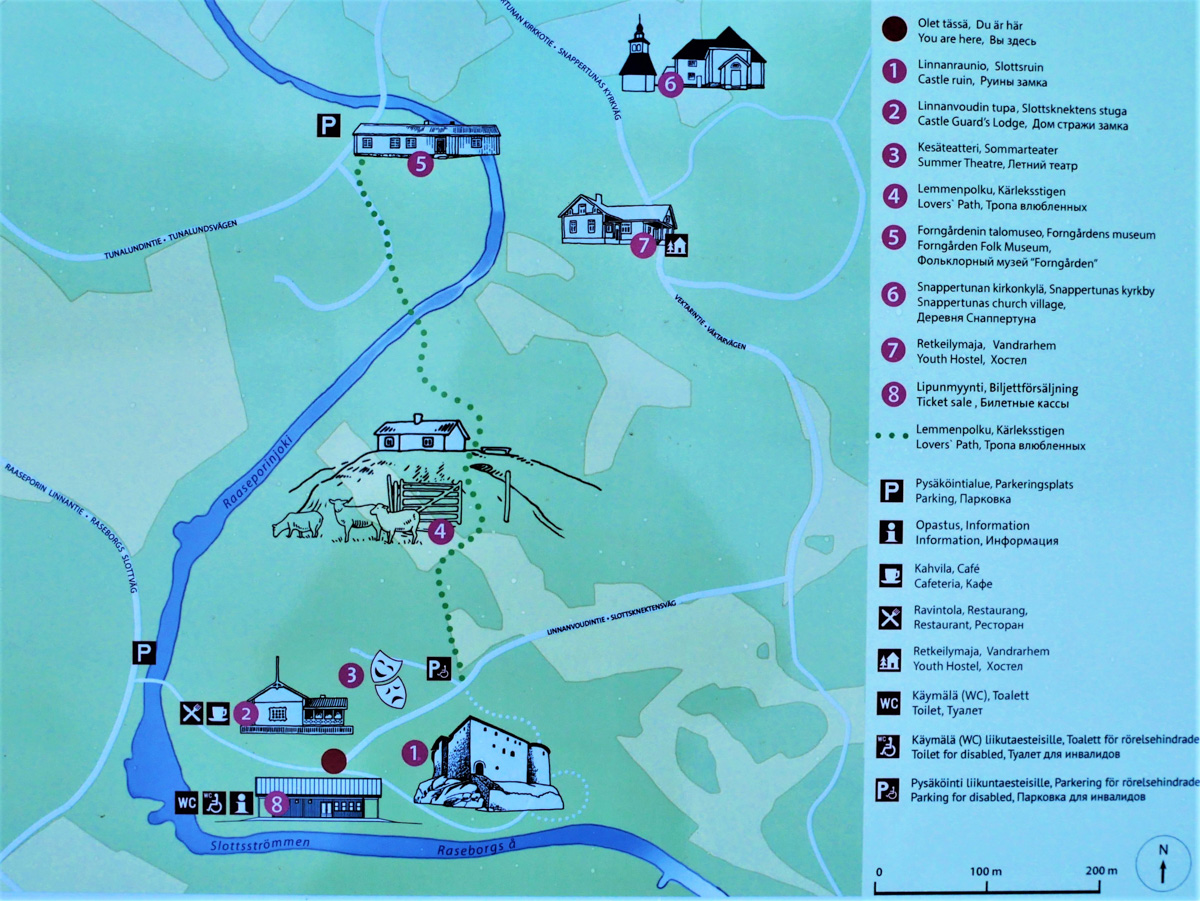
But now, when it’s still spring, we’ll just have to do without pastries and automobiles. So, on with the adventure!
Near to the castle, there’s also a so-called multi-cache which consists of several stages.

Stacy is figuring out the coordinates of the cache hint, only to come to a conclusion that we will not be going after the multi-cache at all today. It would seem that to find even the first stage we would have to tread in deep snow, and who knows how far the final stage would be.
So, we cross over to the other side of the Raseborg River and continue our adventure from there.
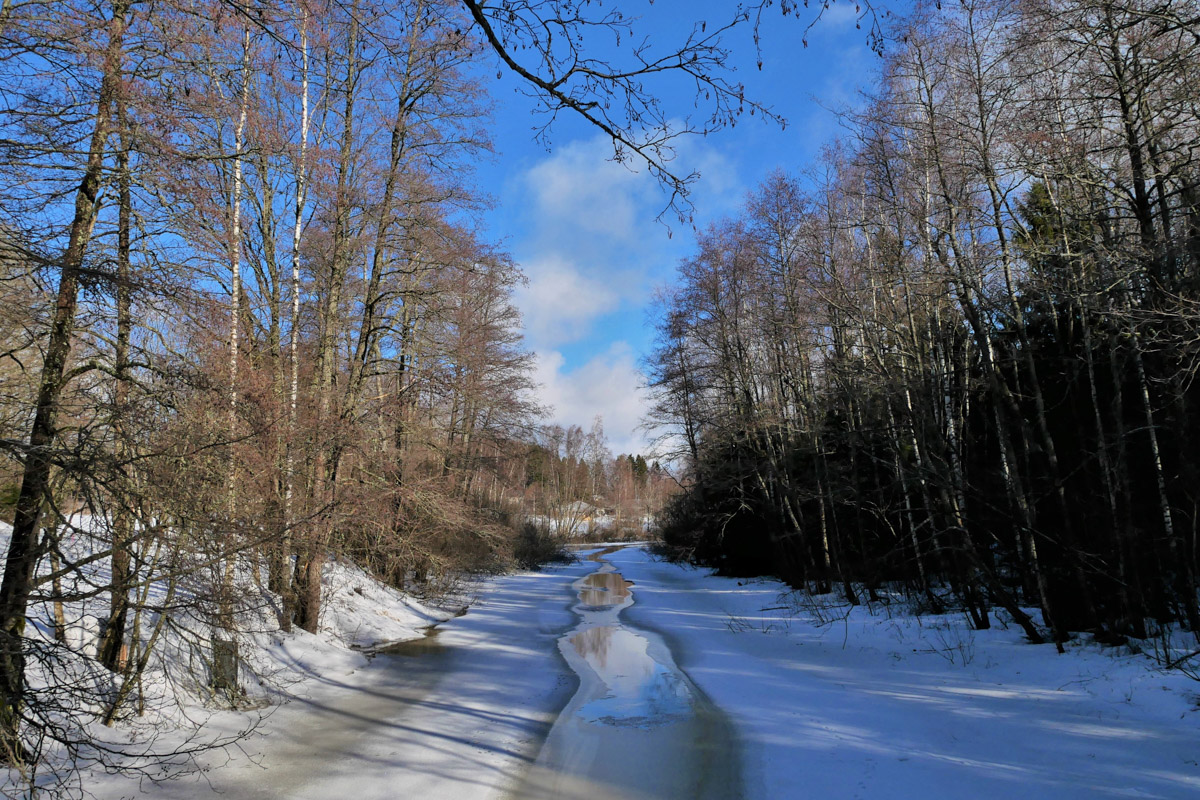
DNF from under the bridge
Although the caches are sometimes in exciting and possibly even dangerous places, you must have a sensible approach to this hobby. Don’t put yourself (or others) in danger, and don’t do anything illegal.
The next cache should be under a small road, hidden somewhere in the structures of a bridge over a troubled water. Under the bridge, there is a steeply declining stone pavement, and a cold and treacherous current runs right under it. To be able to safely look for the cache and not fall into the ice-cold water, you should have a proper rope with you. As we don’t have one, all we can do is say DNF! That means “did not find”. Actually, we couldn’t even start, because our shoes were too slippery, and there was no point in hurting ourselves.
Nevertheless, the scenery is rewarding, so the trip here is not a total waste. We pick up few aluminium cans someone has tossed on the side of the road. As you know, aluminium turns to dust relatively slowly…
By the way, there’s this great geocaching trend called CITO, which is short for Cache In, Trash Out. In CITO, the cachers clean the place of the cache from any harmful material and take the trash out. Or, they do something else environmentally friendly before establishing the cache.
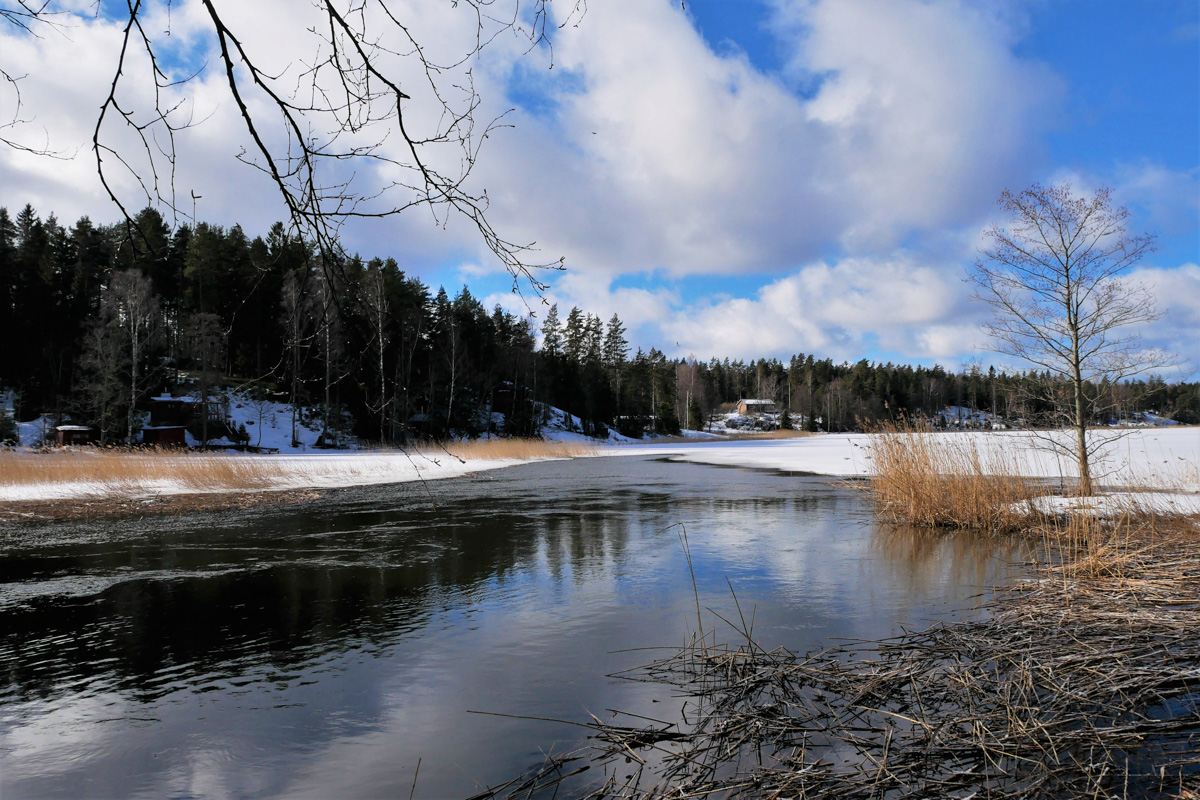
The suspension bridge of Raseborg – The essence of geocaching
Stacy tells us that “Geocaching as a hobby is at its best when it motivates people to move and takes them to new and awesome places which they would not otherwise see.” She says that there is a suspension bridge in the island of Skärlandet, 10 kilometres south from the city of Tammisaari, and it’s well-known by the geocaching community. It can be accessed by taking a ferry from Skåldö. OK, but why haven’t I heard about it, and neither has Google? Are you kidding me?
But today, I will witness with my own eyes that world is indeed different for geocachers. In summer weekends, you would have to line in to get to the ferry of Skåldö, but now there are only a few cars, and we get there quickly as if we were driving.
The starting coordinates direct us to the recreation area of Kopparö into the beautiful nature of the archipelago. We move on to find out what the suspension bridge of Raseborg with a FP rating of 13 really is!
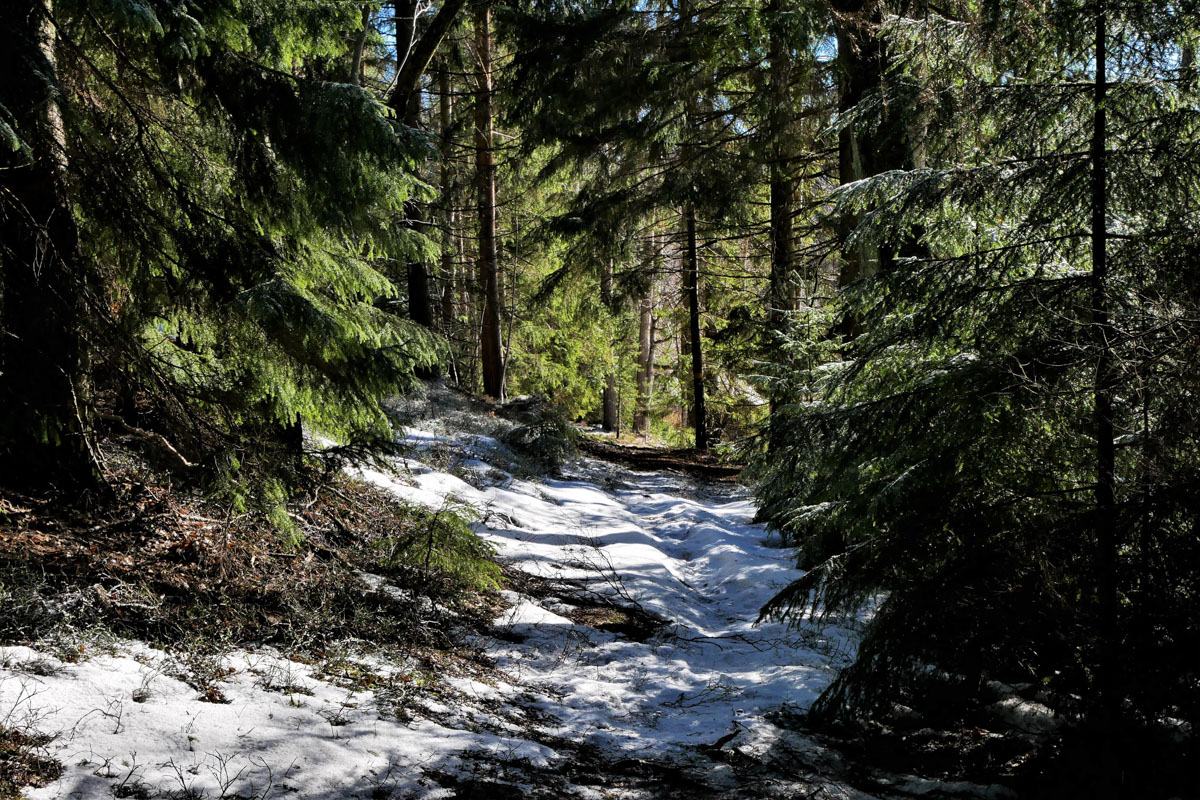
We find the place where the path starts. Someone else besides us seems to have taken the path recently – someone other than a deer. Deer, according to all the tracks, seem to be in abundance here. The sun is shining, and the path runs in a beautiful forest. Snow has melted from small spots here and there, and quite soon it will melt from all over.
I step off the path onto a small cliff. Lovely spring is already here!
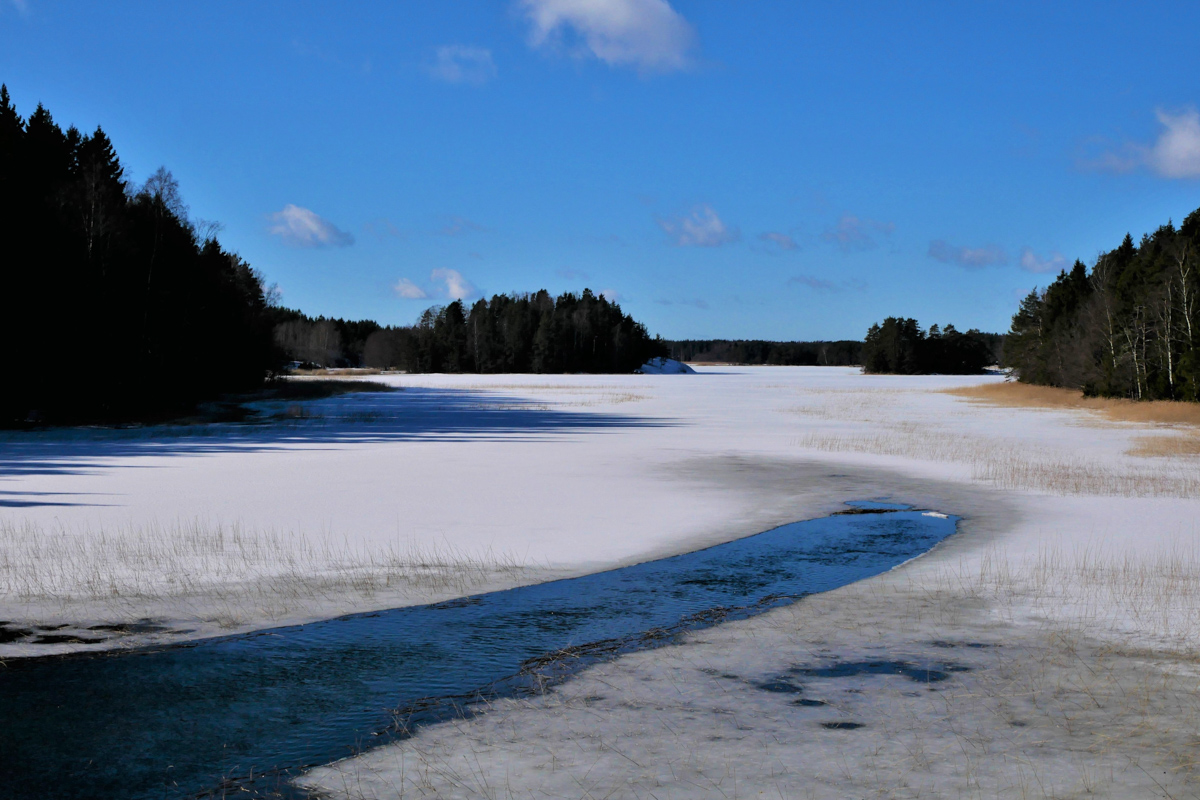
About 600 metres from the start, I shout out aloud.
Wow! There it is – a real suspension bridge of which even Google is aware! Yet.

We make our first contact with the suspension bridge safely from ground level.
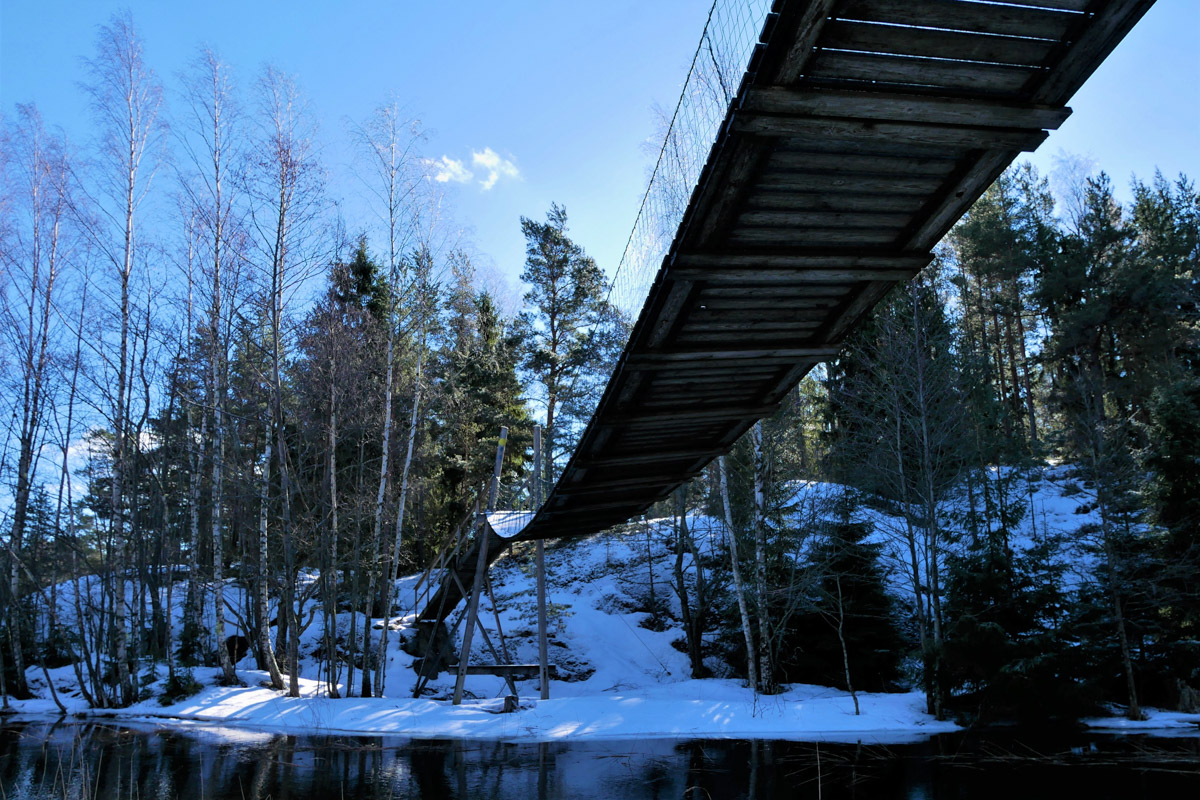
It seems quite reliable…hefty utility poles on both ends, and strong-looking cables to hold the bridge.
I climb up the high stairs – only to come back down and muster some more courage.
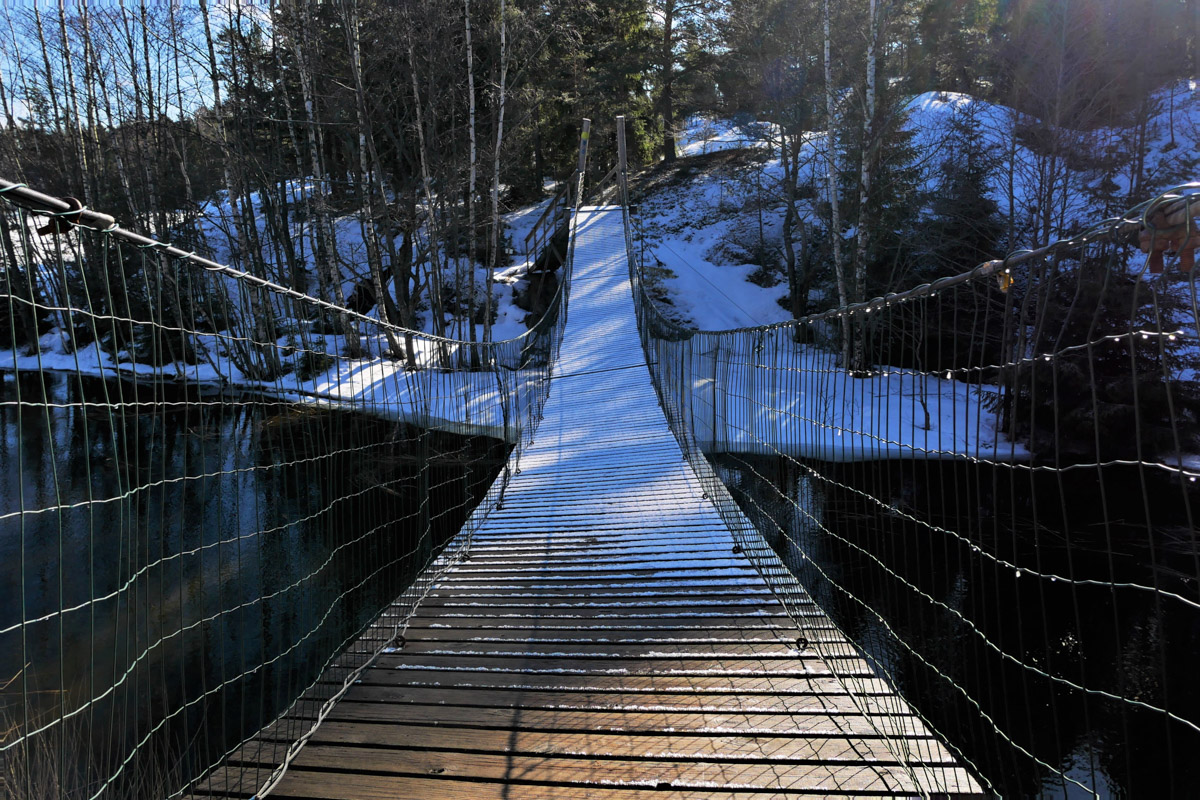
I guess there’s no helping it. I just have to do it. With my own responsibility of course. It would be a shame to leave the cache unfound just because I’m afraid of heights. Besides, this bridge is not that high anyway. Little quirky, though. The deck is tilting little to the left – could I fall off?
Having mustered enough courage, I step onto the bridge. I hear an ominous creak, but Stacy reassures me that it’s just because the bridge is frozen. The handrail is low, and I am really afraid to cross the bridge. After all, this bridge is something different from the bridges in our national parks in general. Making slow progress, I grab onto the handrails, staying as low as possible.
I am across! And didn’t even have to swim!
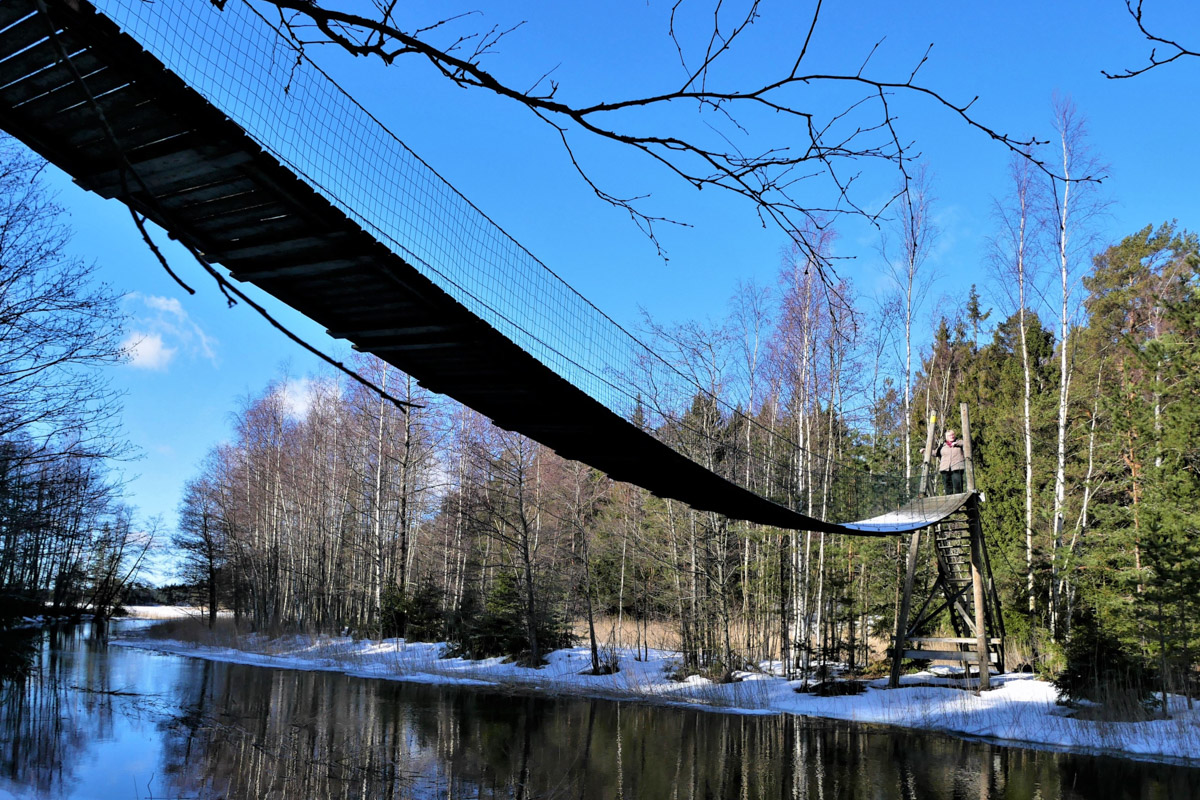
My personal geocaching coach Stacy is yelling me instructions from the other side.
What a feeling when the cache is found! The log book is jammed deep inside the jar, refusing to come out. Look at this muggle logging her first cache! When I finally get the teeny-weeny notebook in my hands, the lid falls down. Next to go is the resealable plastic bag. Gust of wind snatches it from my fingers.
To my luck, the flight of the bag stops onto a branch in a nearby tree and I manage to get it back where it belongs. Phew, this is exciting!
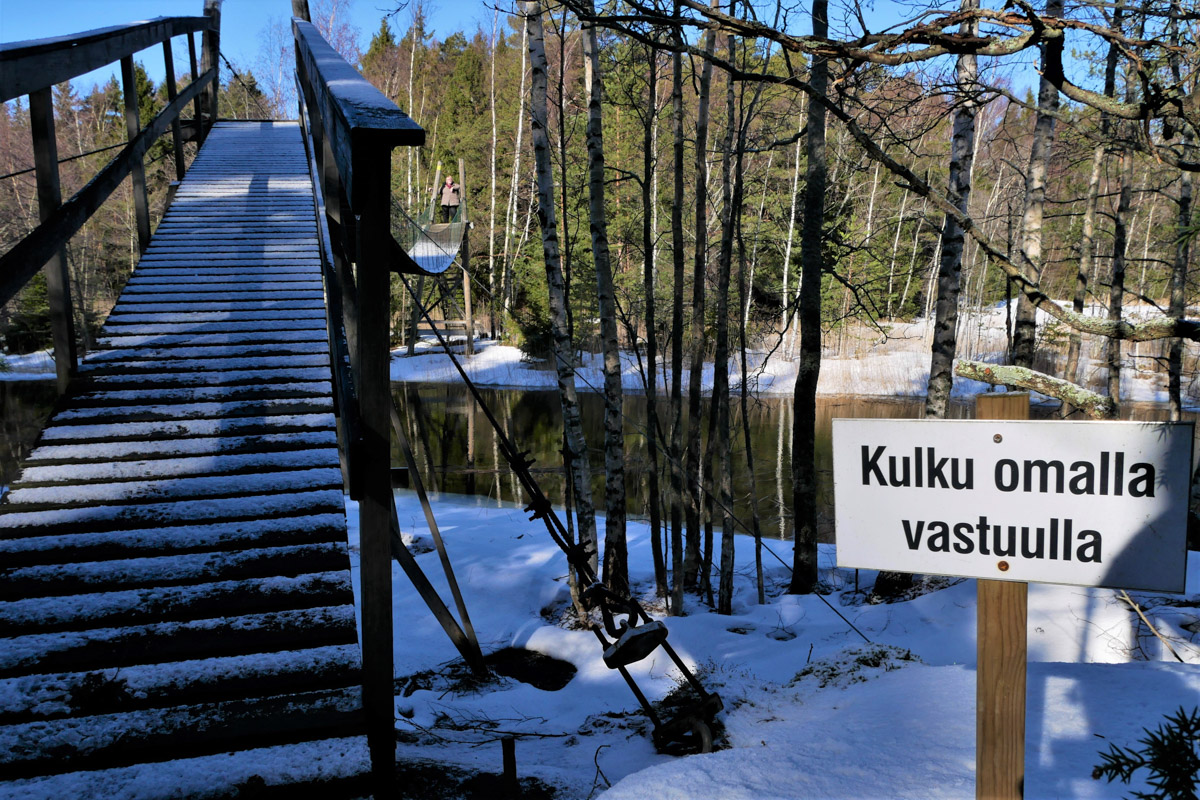
This is it. Geocaching at its finest. Excitement and experiences!
Geocaching motivates to move year round. It will take you to new and exciting places that you probably wouldn’t otherwise see.
It is true – without geocaching, I wouldn’t have found this awesome place!
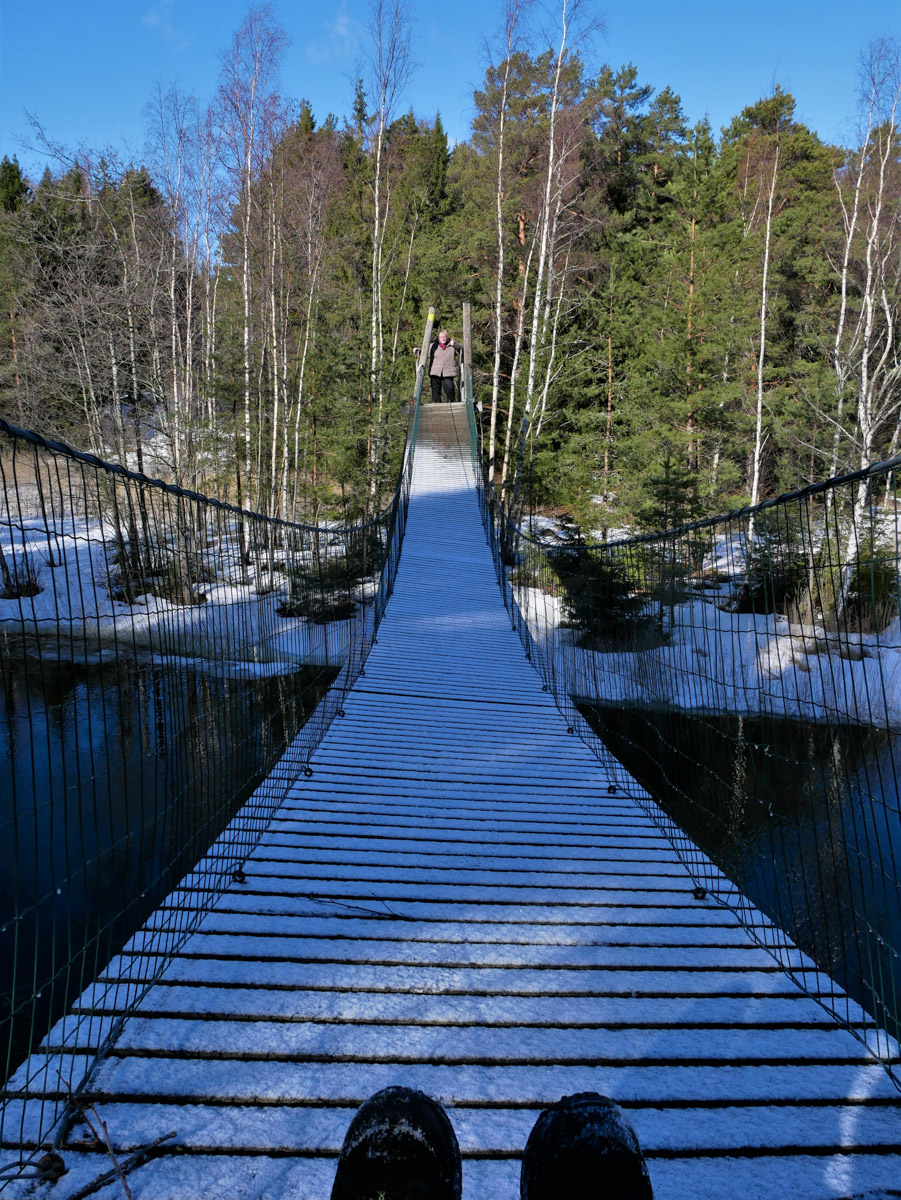
I sit down to the other end of the suspension bridge, happy with myself. Success feels even better when the view is so great. For the whole length of the bridge. Right here, right now.
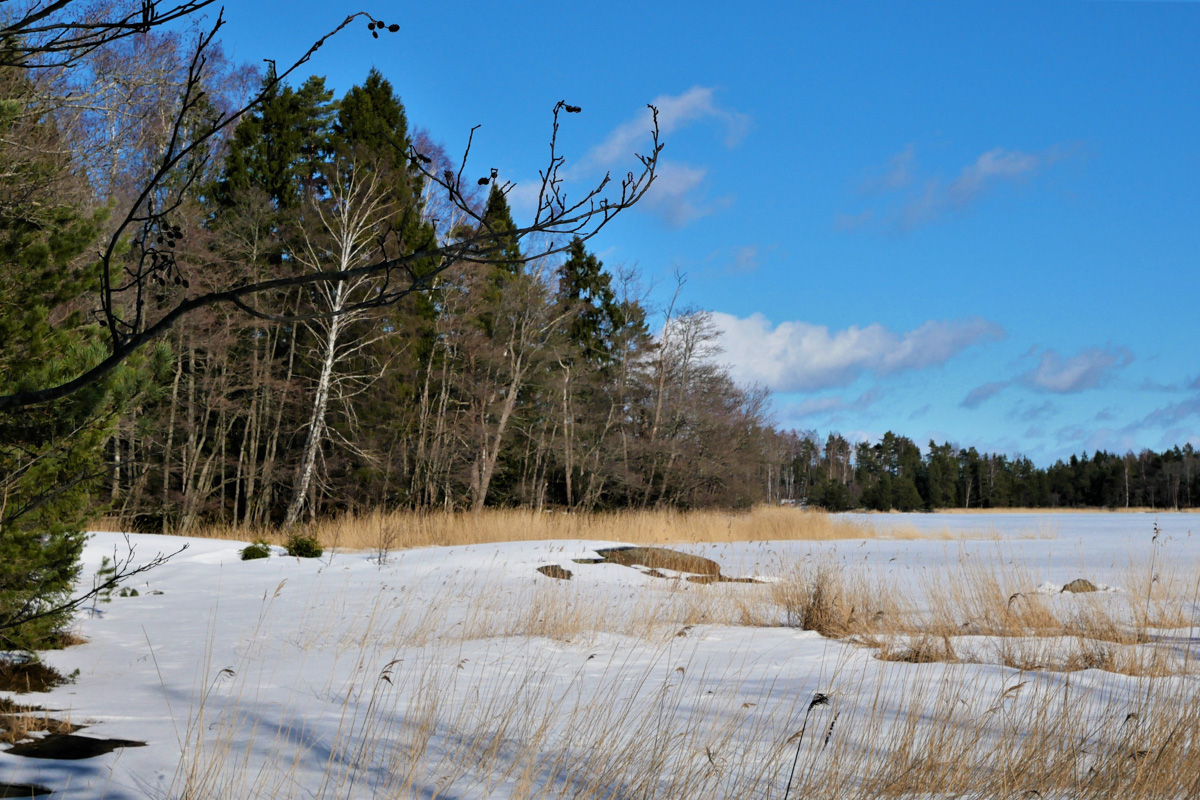
To the cache of the fateful Jomalvik Channel
We have been geocaching for hours, but still decide to check one more cache on our way back. So we drive to the fateful Jomalvik Channel.
It feels that not even a race car driver could drive through the channel – that’s how narrow it looks.
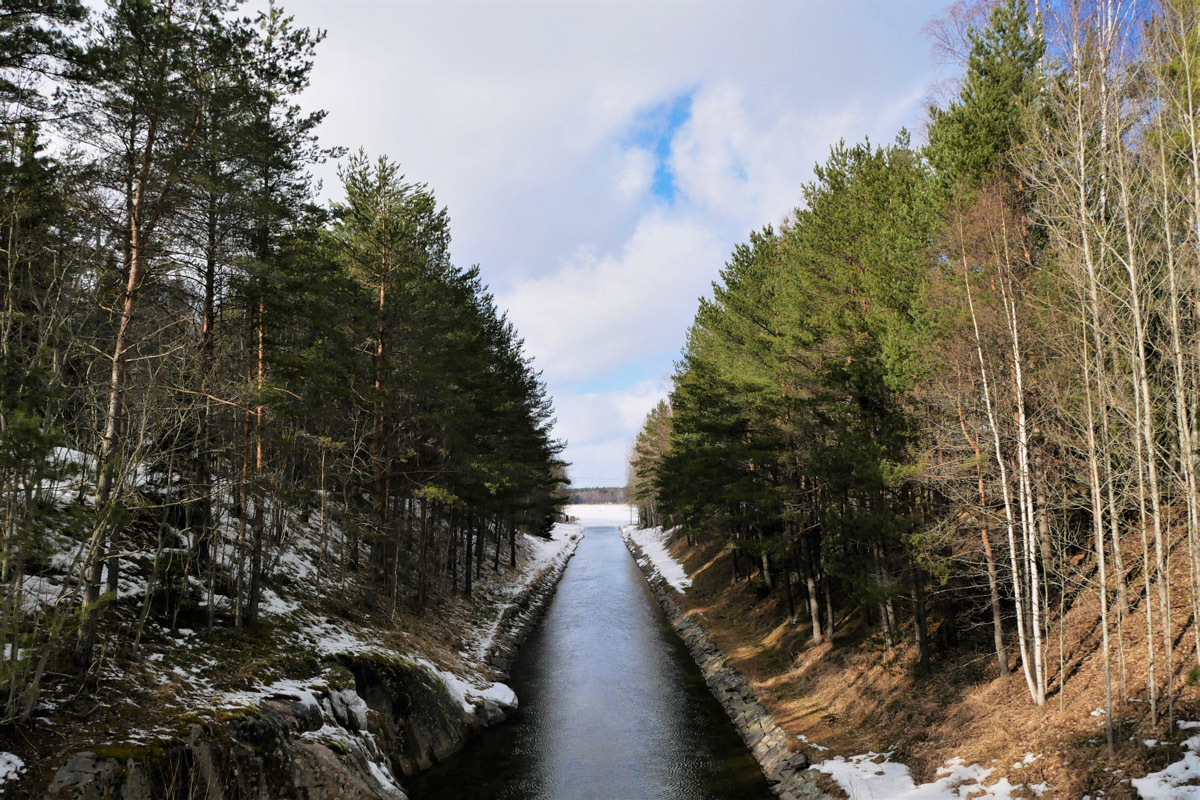
Although Stacy’s GPS data seems to be valid, and the cache hint is supposed to be on the level, we just don’t find the cache. We seem to be blind as bats.
The accuracy of the GPS varies from 3 to 5 metres, but we don’t find anything where we’re supposed to. I am glad that there’s no-one else around who might wonder what the cache is going on.
“This goes to show how important it is to maintain the geocaches. If the cache is not found, it’s probable that it’s not there in its original location and could use some maintenance.”
Although we logged another DNF, the day in beautiful Raseborg has been awesome, to say the least! I have seen many new and wonderful places and learned a lot as well.
It has been exciting and a little scary, too, but I have to say that this is very addictive. On my next journeys, I might even stop “for a few” as they say. Not for a cold beer, but for caches! But, who knows…
This world-wide treasure hunt called geocaching is so dope! Just give it a chance!
Epilogue
After our day in the realm of geocaching, we find out that the exciting suspension bridge is on the Kopparö Nature Trail. The trail is marked with yellow markings, and it runs partly inside a nature preservation area. The trail will end at the beach of Stora Sandö where there’s a campfire site and an outdoor toilet. The length of the trail from the Kopparö Harbour to the campfire site of Stora Sandö is 3.2 kilometres. When you want to go and conquer the suspension bridge, you should leave your car at the parking area of Kopparö to keep it out of the way. If you ask from the restaurant in Kopparö, they will gladly point you to the right direction and even give you a map if you need one. More information about the services in Kopparö, go to www.kopparo.fi (only in Finnish).
The opening hours of the Raseborg Castle and the Slottsknekten are shown at www.raaseporinlinna.fi. There you can find valuable information about other services at Snappertuna and about accommodation services as well!
Translation from Finnish: Mikko Lemmetti
Read more
The Raseborg Castle on Facebook

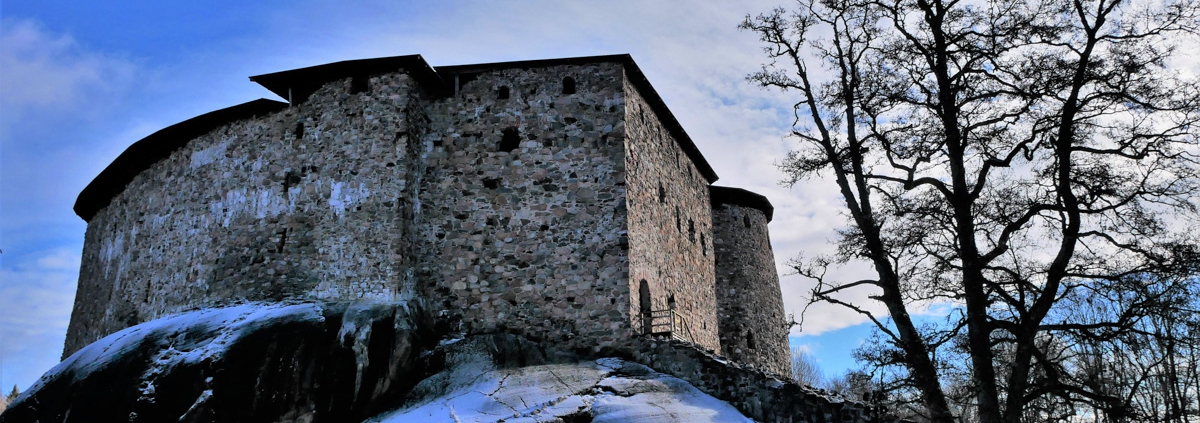
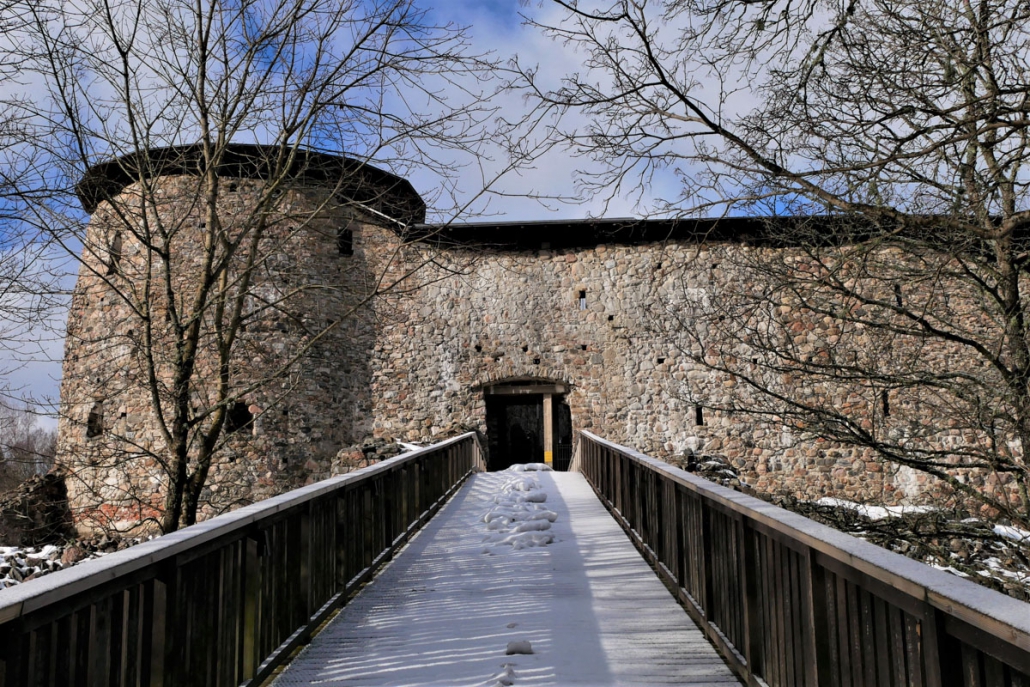
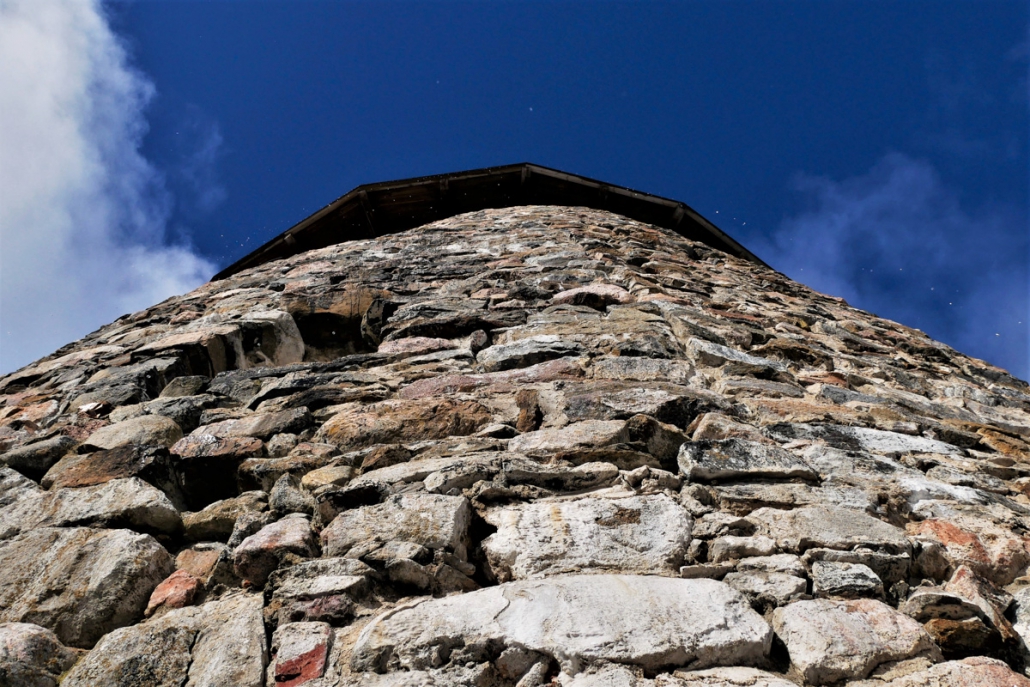
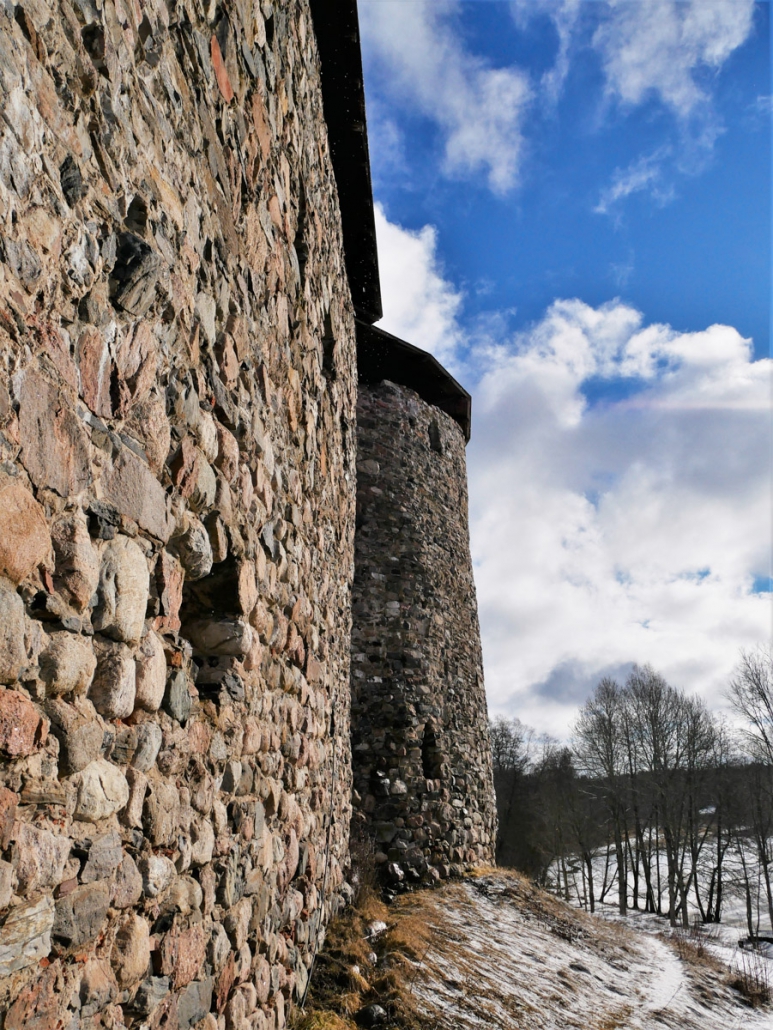
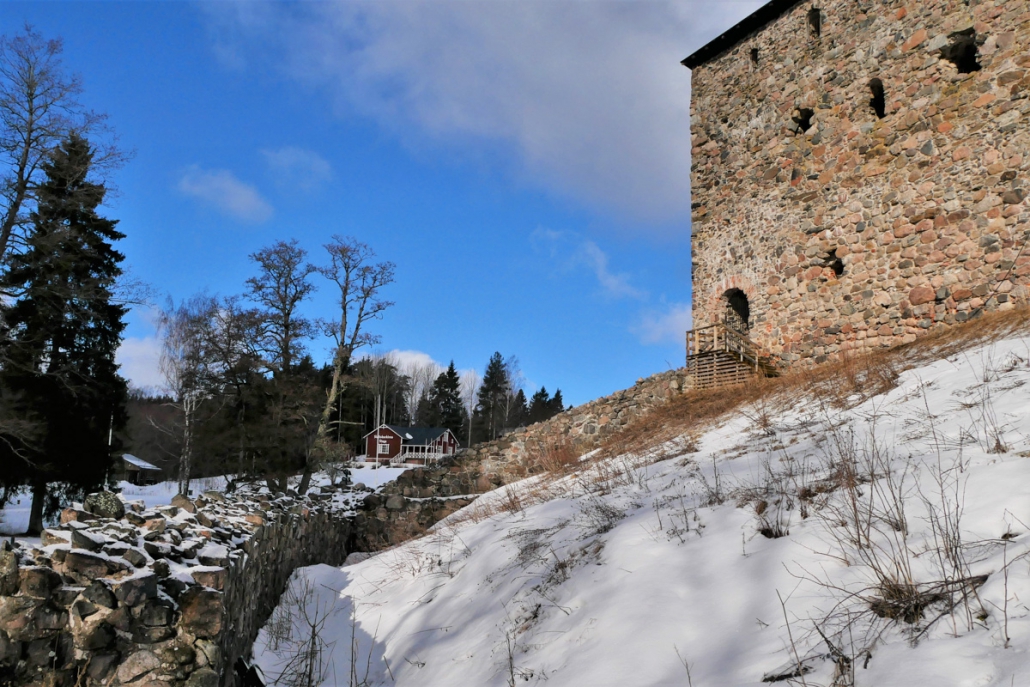



Leave a Reply
Want to join the discussion?Feel free to contribute!